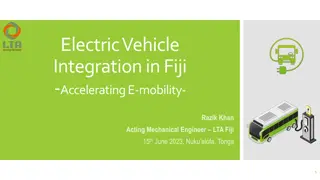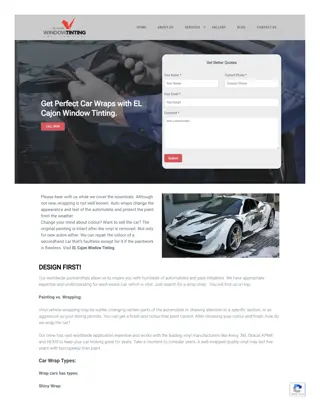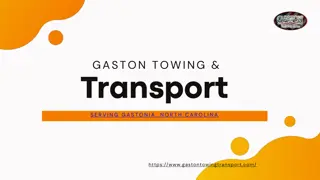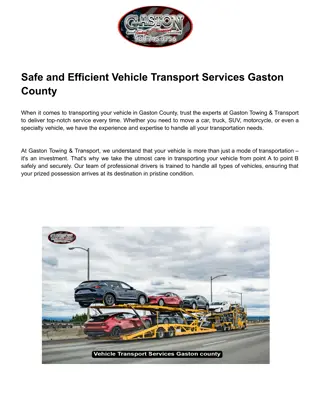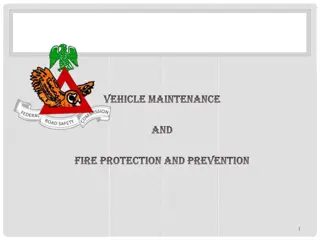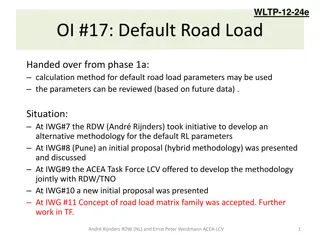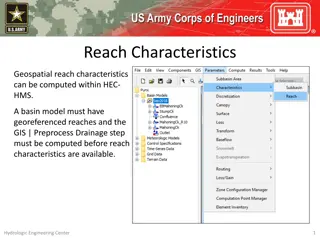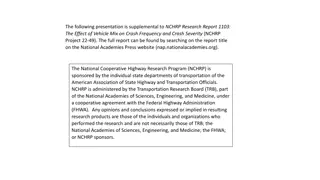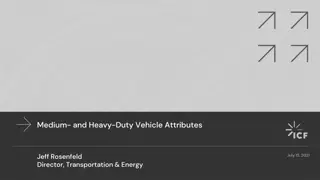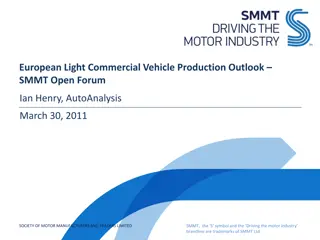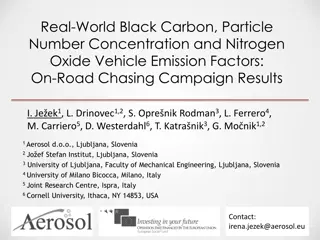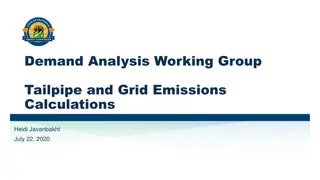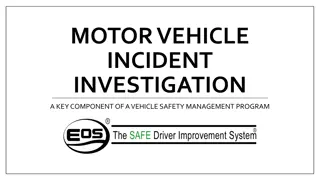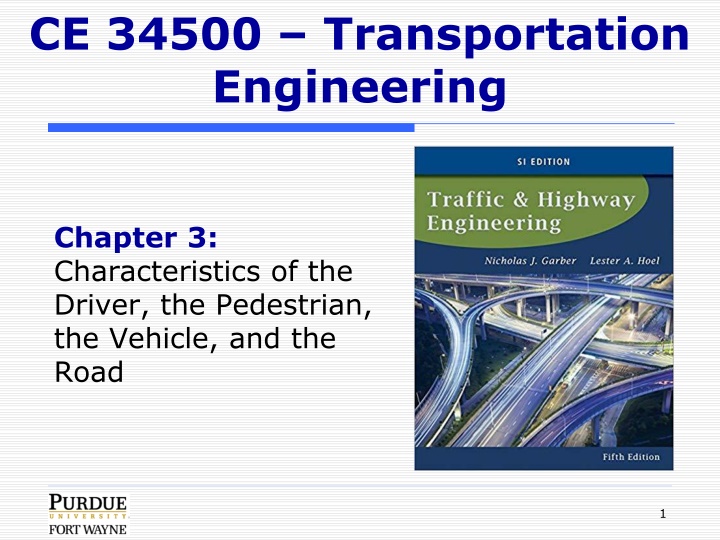
Vehicle Characteristics in Transportation Engineering
Explore the intricate details of vehicle characteristics in transportation engineering, including static and dynamic aspects such as size effects, weight considerations, acceleration and deceleration rates, and various resistances encountered during motion.
Uploaded on | 0 Views
Download Presentation

Please find below an Image/Link to download the presentation.
The content on the website is provided AS IS for your information and personal use only. It may not be sold, licensed, or shared on other websites without obtaining consent from the author. If you encounter any issues during the download, it is possible that the publisher has removed the file from their server.
You are allowed to download the files provided on this website for personal or commercial use, subject to the condition that they are used lawfully. All files are the property of their respective owners.
The content on the website is provided AS IS for your information and personal use only. It may not be sold, licensed, or shared on other websites without obtaining consent from the author.
E N D
Presentation Transcript
CE 34500 Transportation Engineering Chapter 3: Characteristics of the Driver, the Pedestrian, the Vehicle, and the Road 1
Vehicle Characteristics Static o Weight and size of vehicle Kinematic o Motion w/o considering forces that cause vehicle to move Dynamic o Forces that cause or retard motion of vehicle Choice of Design Vehicle o Has characteristics that encompass those of nearly all vehicles expected to use highway
Vehicle Characteristics Static Characteristics o Size effects lane & shoulder width, size of parking spaces, lengths of vertical curves, etc. o Weight effects pavement thickness, maximum grades, climbing lanes, etc.
Vehicle Characteristics Acceleration & Deceleration o Maximum Acceleration Rate Tractor-Trailer 1.0 to 2.8 ft/sec2 Large Car 5.5 to 6.8 ft/sec2 Sports Car 7.8 to 9.3 ft/sec2 o Braking Deceleration Rate Cars : 11.2 ft/sec2 (Green Book / 90th percentile)
Vehicle Characteristics Dynamic Characteristics o Air Resistance From air in front and around vehicle o Grade Resistance Component of weight when moving up hill o Rolling Resistance Frictional effects on moving parts within the vehicle and between pavement and tires
Vehicle Characteristics Dynamic Characteristics o Curve resistance Retarding force on front wheels which resist forward motion of vehicle o Power requirements Sufficient to overcome sum of all resisting forces and put vehicle in motion
Vehicle Characteristics Braking Distance
Example 3.5 14
Vehicle Characteristics Stopping Sight Distance Formula o Stopping distance = Reaction distance + Braking distance o Reaction time = 2.5 sec. (>90th percentile) o Braking deceleration rate = 11.2 ft/sec2 Can be achieved by most drivers while retaining control of vehicle When most drivers make emergency stop, deceleration rate is >14.8 ft/sec2
Stopping Sight Distance 2 u a g = + 1.47 SSD ut 30 G
Minimum Radius of a Circular Curve
Minimum Radius of a Circular Curve Minimum Curve Radius Formula o Forces acting on vehicle Vehicle weight Friction force between tires & roadway Centrifugal force o Sum of forces acting on vehicle parallel to roadway is zero o Coefficient of side friction Based on driver comfort Given in Table 3.3
Minimum Radius of a Circular Curve Minimum Curve Radius Formula o Maximum Superelevation Rate Depends on various factors rural or urban area, weather conditions, etc. Ranges from 0.12 to 0.04 Maximum rate of 8% used in areas (e.g., Wyoming) which experience winter weather (snow and ice on roadway) Maximum rate of 4% used in urban areas to minimize effects on adjacent property, intersections, etc.
Minimum Radius of a Circular Curve 2 u = R ---------- Equations 3.33 + ( ) g e f s 2 u = R ---------- Equations 3.34 + 15 ( ) e f s
Coefficient of Side Friction Table 3.3 Coefficient of Side Friction, fs Design Speed 30 40 50 60 70 0.2 0.16 0.14 0.12 0.10
General Dynamics Formulas General dynamics formulas Vf = v0 + at d = v0t + at2 Vf 2 = v0 2 + 2ad Where, Vf = final velocity (ft/sec) v0 = initial velocity (ft/sec) a = acceleration or deceleration rate (ft/sec2) t = time (sec) d = distance (feet)
Vehicle Characteristics LN N = + + 500 12 36 W N 1 Where, W = overall gross weighted (nearest 500 lb) L = extreme of any group of two or more consecutive axles (ft) N = number of axles in group under consideration
Stopping Distance Formulas 2 2 1 2 2 u u u = = Db Db a a 30 G 30 G g g 2 u = + (ft) . 1 47 S ut a 30 G g




